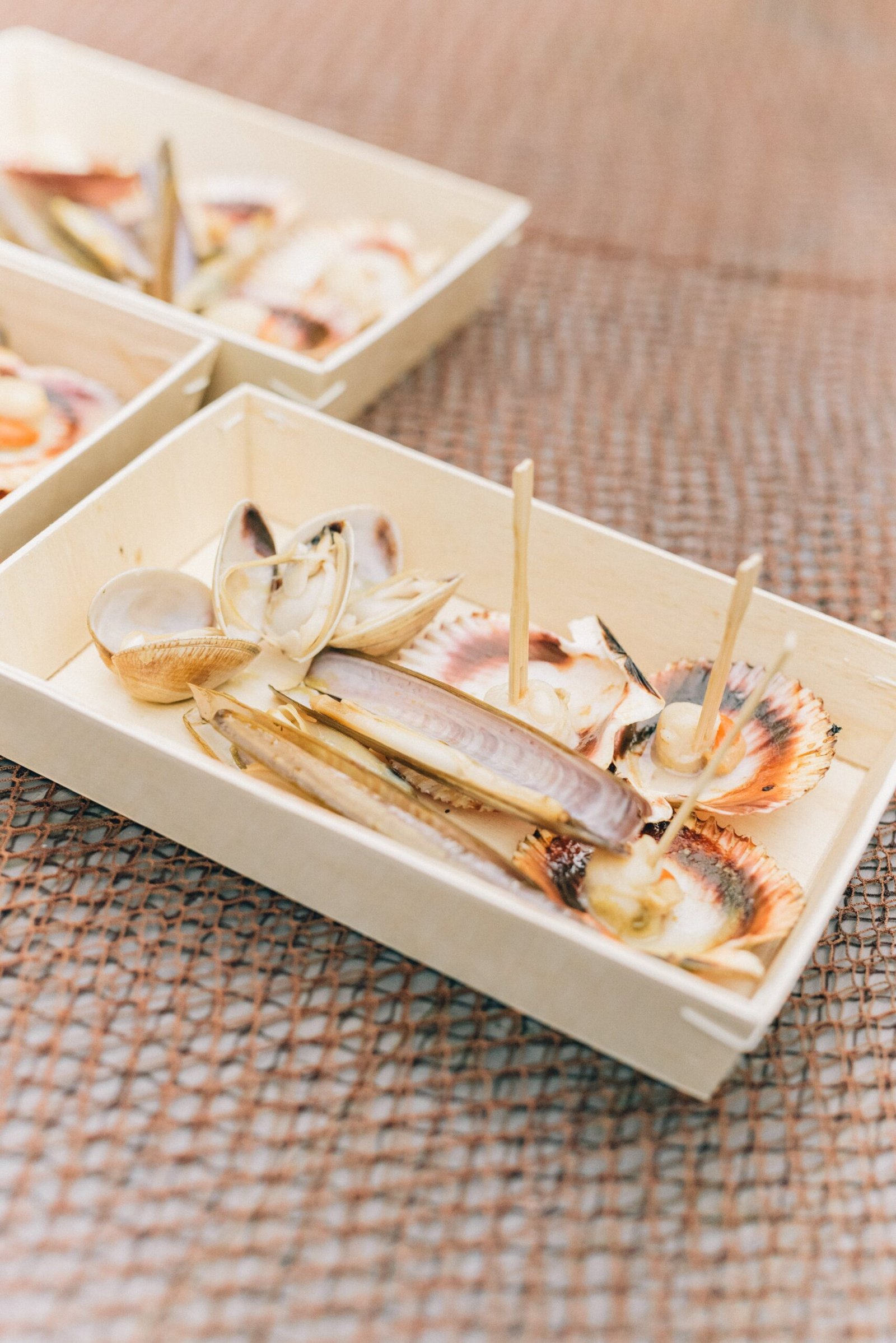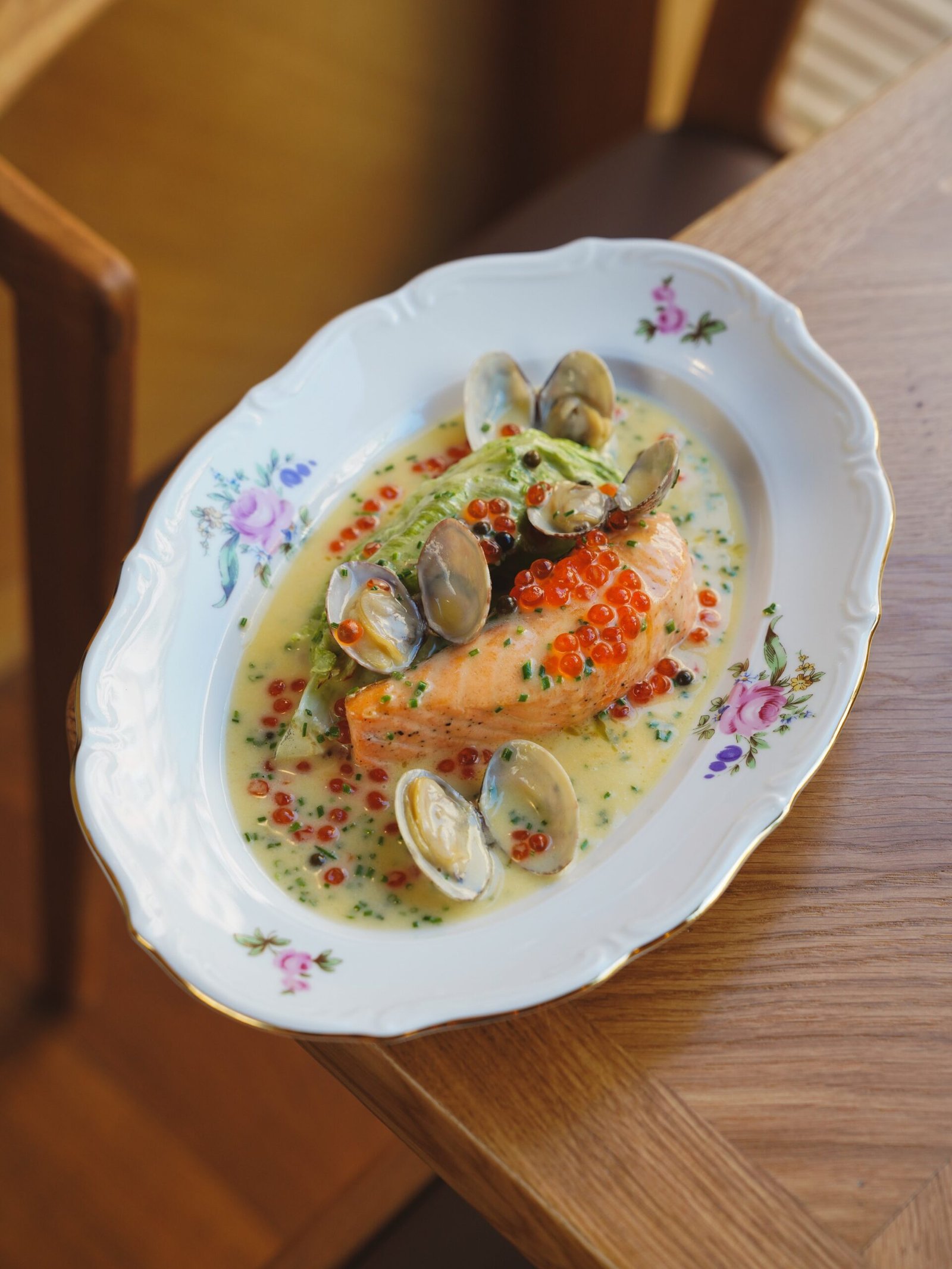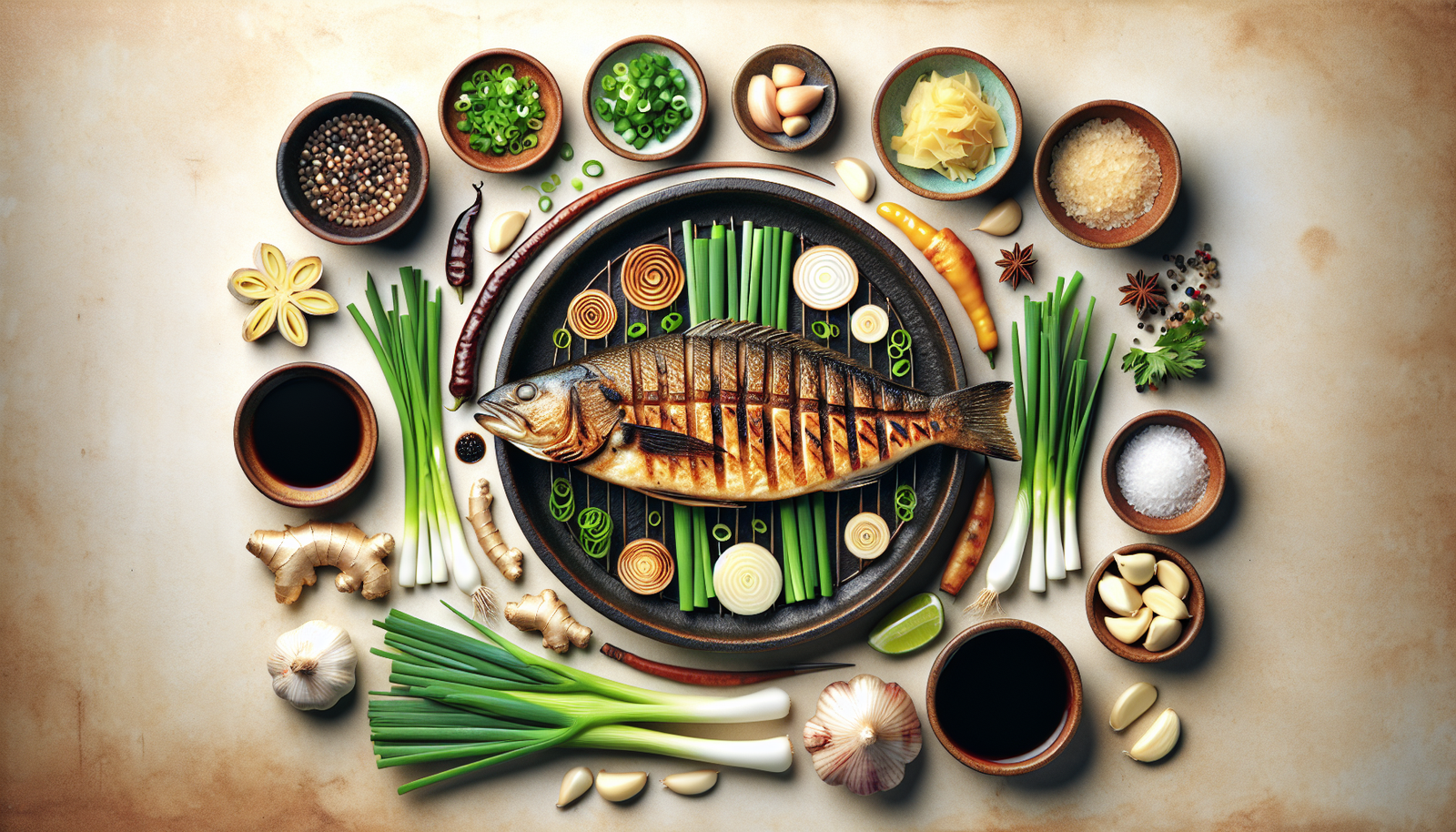If you’re craving a taste of Korea’s delightful cuisine, then properly seasoning and preparing traditional Korean grilled fish (gui) is a must-try culinary experience. This fascinating process involves carefully selecting the fish, skillfully marinating it with a delectable combination of Korean flavors, and grilling it to perfection. By delving into the intricate art of seasoning and preparing Korean grilled fish, you’ll unlock a world of tantalizing flavors that are sure to impress your taste buds and transport you to the vibrant streets of Korea.

Choosing the Right Fish for Grilling
When it comes to grilling fish, freshness is the key factor to consider. Look for fish that has clear and bright eyes, shiny skin, and a fresh sea smell. The flesh should be firm and spring back when touched. Some great options for grilling include salmon, tuna, snapper, trout, and mackerel.
Preparing the Fish for Seasoning
Before you start seasoning the fish, make sure it is properly cleaned and scaled. Rinse the fish under cold water and pat it dry with paper towels. This will ensure that the seasonings adhere well to the fish and result in a better flavor. If desired, you can also remove the head and tail of the fish for a more presentable look.
Preparing the Marinade
When it comes to traditional Korean grilled fish, a marinade is an essential component to enhance the flavor. Here are some common ingredients used in Korean marinades:
- Soy sauce: Adds a savory and umami flavor.
- Garlic: Provides a fragrant and aromatic element.
- Ginger: Adds a subtle warmth and depth to the marinade.
- Sesame oil: Imparts a nutty and rich flavor.
- Honey or sugar: Balances the flavors and adds a hint of sweetness.
- Korean chili paste or flakes: Adds a spicy kick to the marinade.
Step-by-Step Marinade Preparation
- In a bowl, combine soy sauce, minced garlic, grated ginger, sesame oil, honey or sugar, and Korean chili paste or flakes.
- Whisk the ingredients together until well combined and the sugar or honey is completely dissolved.
- Place the cleaned and dried fish in a shallow dish or a resealable plastic bag.
- Pour the marinade over the fish, making sure it is evenly coated on all sides.
- Cover the dish or seal the bag and let the fish marinate in the refrigerator for at least 30 minutes, or up to several hours for a more intense flavor.

Seasoning the Fish
Apart from marinades, you can also choose to season the fish with dry rubs or wet marinades directly before grilling.
Dry Rubs for Grilled Fish
Dry rubs are a great way to add a burst of flavor to your grilled fish. Here are some popular dry rub options:
- Lemon pepper: Combines the freshness of lemon zest with the heat of black pepper.
- Cajun seasoning: Adds a spicy and smoky flavor profile.
- Herb and garlic: Infuses the fish with a fragrant and savory taste.
- Mediterranean spice blend: Combines flavors like oregano, thyme, and rosemary for a Mediterranean twist.
Wet Marinades for Grilled Fish
If you prefer a juicier and more flavorful fish, consider using wet marinades. You can use the same marinade recipe mentioned earlier or experiment with your own favorite flavors. Ensure that the fish is thoroughly coated with the marinade for optimal flavor.
Marinating and Resting the Fish
Marinating the fish allows the flavors to penetrate the flesh and infuse it with deliciousness. However, it’s important to keep in mind the ideal marinating time to achieve the best results.
Ideal Marinating Time
For most fish, a marinating time of 30 minutes to 2 hours is sufficient. However, more delicate fish like flounder or sole may require a shorter marinating time, as their flesh can become mushy if left in the marinade for too long. It’s always a good idea to refer to specific recipes or guidelines when marinating fish.
Properly Resting the Marinated Fish
After marinating, it’s crucial to let the fish rest at room temperature for about 10 minutes before grilling. This helps to even out the temperature and ensures more even cooking. Additionally, allowing the fish to rest allows the flavors to fully develop and intensify.

Choosing the Right Grill
Selecting the right type of grill is essential for achieving the perfect grilled fish. There are two common options: charcoal grills and gas grills. Let’s explore the pros and cons of each.
Charcoal Grills vs. Gas Grills
Charcoal grills are known for providing a distinct smoky flavor to the food. They can reach higher temperatures, which is ideal for creating a nice sear on the fish. However, they require more time and effort to set up and monitor the temperature.
On the other hand, gas grills offer convenience and ease of use. They provide precise temperature control, making it easier to cook fish to perfection. However, they may lack the smoky flavor that charcoal grills impart.
Ultimately, the choice between charcoal and gas grill depends on your personal preferences and the flavor profile you desire for your grilled fish.
Preparing the Grill for Fish
Before grilling the fish, ensure that the grill grates are clean and well oiled to prevent sticking. Preheat the grill to medium-high heat, around 375-400°F (190-204°C). This temperature range is suitable for most fish and allows for a nice sear while ensuring the inside is cooked to perfection.
Grilling Techniques
Grilling fish requires proper techniques to achieve desired results in terms of flavor and texture. Let’s explore some key grilling techniques to help you master grilled fish.
Direct Heat vs. Indirect Heat
Direct heat grilling involves cooking the fish directly over the flame or heat source. This method is suitable for fish fillets or smaller whole fish, as it ensures quick and even cooking.
Indirect heat grilling, on the other hand, involves placing the fish to the side of the heat source, allowing for slower and more gentle cooking. This method is ideal for larger whole fish or thicker fillets.
Properly Heating the Grill
Once the grill is preheated, it’s important to maintain the desired temperature throughout the grilling process. Keep the grill lid closed as much as possible to retain heat. If using a charcoal grill, distribute the hot coals evenly to ensure consistent heat. For gas grills, adjust the burners to maintain the desired temperature.
Grilling Time and Temperature
The grilling time and temperature depend on the thickness and type of fish you are cooking. As a general rule, grill fish for about 4-6 minutes per ½ inch of thickness, flipping halfway through. The internal temperature of the fish should reach 145°F (63°C) for optimal safety and tenderness. However, some fish, like tuna or salmon, can be cooked to medium-rare for a more delicate and moist texture.

Flipping and Handling the Fish
Flipping the fish during grilling can be a tricky task, but with some simple techniques, you can do it with ease.
Properly Flipping the Fish
To flip the fish without it sticking to the grill or falling apart, follow these steps:
- Ensure the grill grates are well oiled.
- Use a long-handled spatula or fish turner to gently lift and flip the fish.
- If the fish is sticking, give it a few more seconds to cook before attempting to flip it again.
- Be cautious not to flip the fish too early, as it may fall apart.
Avoiding Fish Stickiness
Fish sticking to the grill grates can be avoided by following these tips:
- Ensure the grill grates are clean and well oiled before placing the fish on them.
- Let the fish cook for a few minutes before attempting to flip it. The heat will help release it from the grill.
- Gently lift the fish with a spatula or fish turner, ensuring the entire piece is lifted at once.
Using Fish Baskets or Grilling Mats
If you’re concerned about the fish sticking to the grill, you can use fish baskets or grilling mats. Fish baskets allow for easy flipping and prevent the fish from falling apart. Grilling mats provide a non-stick surface and make it easier to cook delicate fish without the fear of sticking.
Toppings and Garnishes
Adding toppings and garnishes to your grilled fish can elevate its flavor and presentation. Here are some traditional Korean fish toppings and creative garnish ideas to consider.
Traditional Korean Fish Toppings
- Soy-based glaze: Brushing the fish with a soy-based glaze adds a shiny and flavorful coating.
- Sesame seeds: Sprinkling toasted sesame seeds over the fish adds a nutty and crunchy texture.
- Sliced green onions: Adding thinly sliced green onions on top of the fish provides a fresh and aromatic element.
- Korean chili threads: Garnishing with Korean chili threads adds a pop of color and a mild spicy kick.
Creative Garnish Ideas
- Citrus zest: Sprinkling citrus zest, such as lemon or lime, on top of the fish adds a refreshing and bright flavor.
- Fresh herbs: Garnishing with chopped fresh herbs, like cilantro or dill, adds a burst of freshness and aroma.
- Microgreens: Placing microgreens, such as arugula or radish sprouts, on top of the fish adds a delicate and vibrant touch.

Serving and Enjoying Your Grilled Fish
The presentation and accompaniments play a significant role in the overall enjoyment of grilled fish. Consider the following factors when serving and enjoying your perfectly grilled fish.
Presentation of Grilled Fish
When presenting grilled fish, try to maintain its shape and structure as much as possible. Arrange it on a platter or individual plates, making sure to showcase its beautifully grilled exterior. Garnish with the selected toppings or garnishes to enhance the visual appeal.
Popular Side Dishes to Accompany Grilled Fish
Grilled fish pairs wonderfully with a variety of side dishes. Here are some popular options to consider:
- Steamed rice: Serve the grilled fish with a side of fluffy steamed rice. The combination of the flavorful fish and plain rice is a perfect balance.
- Kimchi: Include a side of kimchi, a traditional Korean staple made of fermented vegetables. Its tangy and spicy flavors complement the grilled fish beautifully.
- Seasonal vegetables: Grill or roast seasonal vegetables like asparagus, zucchini, or mushrooms to serve alongside the fish. It adds a fresh and nutritious element to the meal.
Best Sauces and Dips for Grilled Fish
Sauces and dips can enhance the flavors of grilled fish and provide additional moisture. Here are some options to consider:
- Gochujang sauce: Mix gochujang (Korean chili paste), soy sauce, sugar, garlic, and sesame oil to create a spicy and savory sauce that pairs well with grilled fish.
- Tartar sauce: A classic condiment made with mayonnaise, chopped pickles, capers, and lemon juice. Its creamy tanginess complements the fish beautifully.
- Mango salsa: Combine diced mangoes, red onions, jalapenos, cilantro, lime juice, and salt for a refreshing and fruity salsa that adds a tropical touch to the grilled fish.
Tips for Perfectly Grilled Fish
To ensure your fish is grilled to perfection, consider the following tips:
Maintaining Grill Temperature
Keep a close eye on the grill temperature throughout the cooking process. Adjust the burners or charcoal as needed to maintain a consistent temperature. Fluctuations in heat can result in unevenly cooked fish.
Avoiding Overcooking or Undercooking
Cooking fish just right can be a challenge, but with practice, you can achieve perfect results consistently. Use a meat thermometer to check the internal temperature of the fish, aiming for 145°F (63°C) for most varieties. Overcooking fish can result in dryness, while undercooking can be a safety concern.
Handling Fish Skin
If you prefer to keep the skin on the fish while grilling, ensure it is properly scaled and oiled to prevent sticking. The skin adds a layer of protection and helps retain moisture in the flesh. Grill the fish skin-side down first to achieve a crispy and flavorful skin.
With these comprehensive guidelines, you are well-equipped to properly season and prepare traditional Korean grilled fish. Remember to choose fresh fish, prepare it with care, and experiment with different seasonings and grilling techniques. Enjoy the process and savor the delicious results of your perfectly grilled fish!
